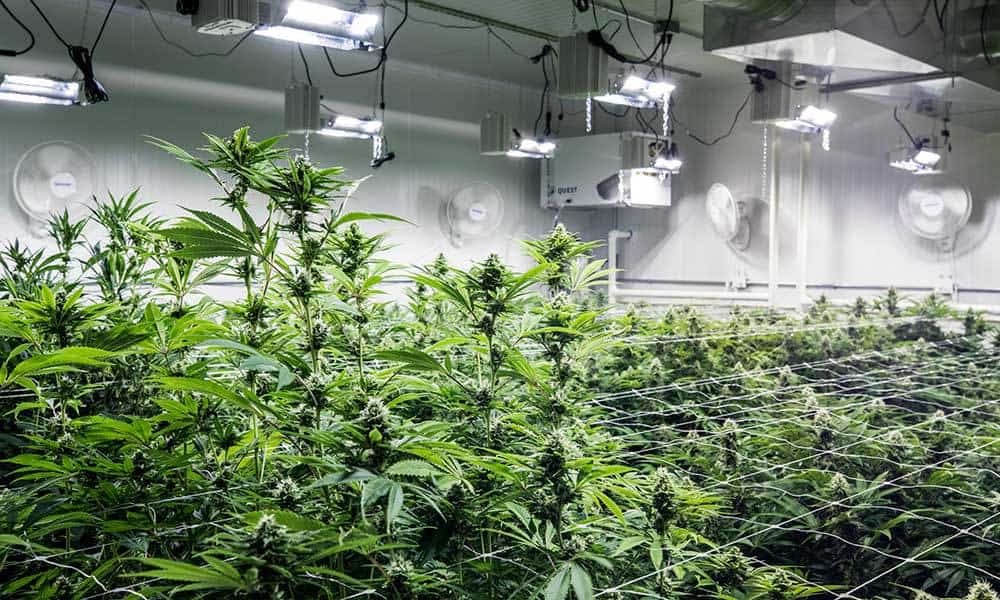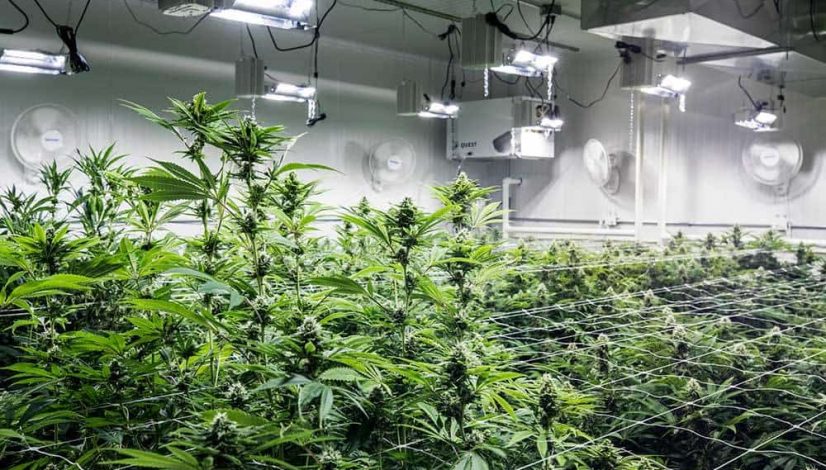What’s The Best Grow Room Dehumidifier For Your Setup?
The post What’s The Best Grow Room Dehumidifier For Your Setup? appeared first on High Times.
Here’s the thing about humidity: It doesn’t care if you’re a basement hobbyist or the biggest, commercial cultivator on the block. It will demand to be managed if you want to have a great indoor grow. A number of factors play a role in controlling humidity: room temperature, number of plants, how much you water. But, ultimately, nearly every indoor grower is going to need a dehumidifier—or a dozen.
So, how do you know what’s the best dehumidifier for your setup? Is efficiency a top priority? Or what about capacity? Maybe it’s ensuring you have the most reliable system possible.
To help break down the best grow room dehumidifier for hobbyists, caregivers, boutique and commercial growers, we talked with two industry veterans: Gary Howard, owner of Urban Garden Center and managing director of Safe Alternatives Dispensary, and Clif Tomasini from Quest Dehumidifiers.
Hobbyists And Humidity
A hobbyist is anyone growing a few plants in their home, perhaps in the basement or a small grow tent.
When it comes to humidity, there is a high likelihood you don’t need additional control if your house or basement is well insulated, equipped with proper HVAC and free of pre-existing moisture issues, Tomasini explained.
“Most hobbyists growing a small number of plants in their home won’t need a dehumidifier. If they do, a small residential unit is likely sufficient,” Tomasini said. “We do recommend these growers monitor humidity as plants mature and water intake increases because a humidity problem can pop up quickly and ruin their buds.”
One way to keep humidity down is to avoid overwatering, Tomasini said. Small, residential dehumidifiers can also help, but they’re inefficient and unreliable, he said.
Howard added that anyone with about eight grow lights, which could fall into the hobbyist category, will want to consider a commercial dehumidifier. That’s because the plant canopy begins to significantly increase and will trap moisture.
Often, a unit that pulls 150 pints of water from the air will do the trick for this size grow, but it’s best to size your room based on how much water you’re giving your plants daily.
While it may be difficult to pull the trigger on a commercial unit, it will pay for itself in money saved on electric bills, he said.
Caregivers—Coming To Terms With Dehumidification
The caregiver category is a broad cross-section of the growing community that often has at least one 10-light room, if not more.
Given the size of the rooms, Howard said humidity control for caregivers is a must. Along with lights and air conditioning, it’s one of the key areas where Howard, a longtime caregiver, would never cut corners.
Humidity control is critical because in this size grow, the plant canopy is much larger than anything a hobbyist is handling. Those plant canopies trap moisture, creating a haven for crop killers like powdery mildew and bud rot, Howard said.
The challenge for caregivers is coming to terms with the fact they need commercial dehumidification.
“We commonly hear this group tell us that they didn’t have a humidity problem as hobbyists, so why would things be significantly different now?” Tomasini said. “Naturally, these customers worry they’re being sold something they might not need. In the end, most growers decide to start with the cheap units to address a humidity problem. It isn’t until those units fail that they look for something more efficient and reliable.”
Howard said a 10-12 light caregiver room usually requires about 300 pints of dehumidification. For that reason, he almost always recommends using two 225-pint units to build in redundancy and to protect against any “worst-case scenarios.”
“I always ask, ‘what are the room dehumidification needs without anything in it, meaning no plants,’” Howard said. “Once we know that number, we can add in how much humidity control we need for an active grow. Consistently, we find about 400 pints of dehumidification is perfect.”
Only The Best For Boutique

For boutique growers, precision is the name of the game, as growers push for the highest-quality product, dialing in terpenes and THC levels.
At this level of growing—usually between 1,000 to 5,000 square feet of grow space—quality and redundancy become the most critical focal points when it comes to environmental controls, Tomasini said.
They’re looking for reliability and performance in every aspect of the grow and that includes dehumidifiers. That’s because one outbreak of mold or mildew, each of which can ruin a grow and cost thousands of dollars, can be prevented by managing humidity.
“For a boutique cannabis grower, similar to a craft beer brewer, their reputation and business hinges on the quality of each crop,” Tomasini said. “For that reason, they’re going to want to ensure they have enough dehumidification power to keep their minds at ease.”
Because redundancy is important, Tomasini recommends a modular setup, using multiple units in each room. Often, he sees the best growers using a couple of 225-pint units per room. This provides enough humidity control for all stages of the grow and allows for adequate backup if one unit needs service.
Commercial Growers—Efficiency And Layout
For anyone operating with more than 50 lights or more than 5,000 square feet of grow space, managing humidity is a must. The focus for commercial growers is on layout and efficiency, Tomasini said.
“These businesses have chief financial officers and are looking critically at things like electricity usage and depreciation of capital assets,” he said. “They want dehumidifiers built to last and units that deliver a return on investment in no more than one year after purchase.”
As commercial grows have increased in size, many growers are looking for units that pull anywhere from 500 to 1,000 pints of water from the air daily, Tomasini said. Units in this range allow growers to still have the redundancy and customization smaller units provide but with the capacity they need, he said.
“We found a lot of growers want midsized dehumidifiers they can still hang overhead in their rooms, so they can control each microclimate independently,” Tomasini said. “That’s what ultimately led our engineers to design the Quest 506, a unit that meets growers’ needs for a larger-capacity unit that’s still highly efficient.”
Because power consumption is a huge concern for nearly every indoor grower, Howard spends time with each grower he helps, to determine not only which unit is the most efficient, but how to lay out a grow room to maximize the performance of their dehumidifiers.
For instance, Howard always makes sure there is proper air movement every eight feet in a room, so dehumidifiers and air conditioners aren’t blowing air on each other, which can make units work harder, costing more money and making them less efficient.
“On a commercial grow, power consumption is huge,” Howard said. “They have to figure it out. Nobody has unlimited power and nobody wants to spend tons of money.”
The post What’s The Best Grow Room Dehumidifier For Your Setup? appeared first on High Times.


